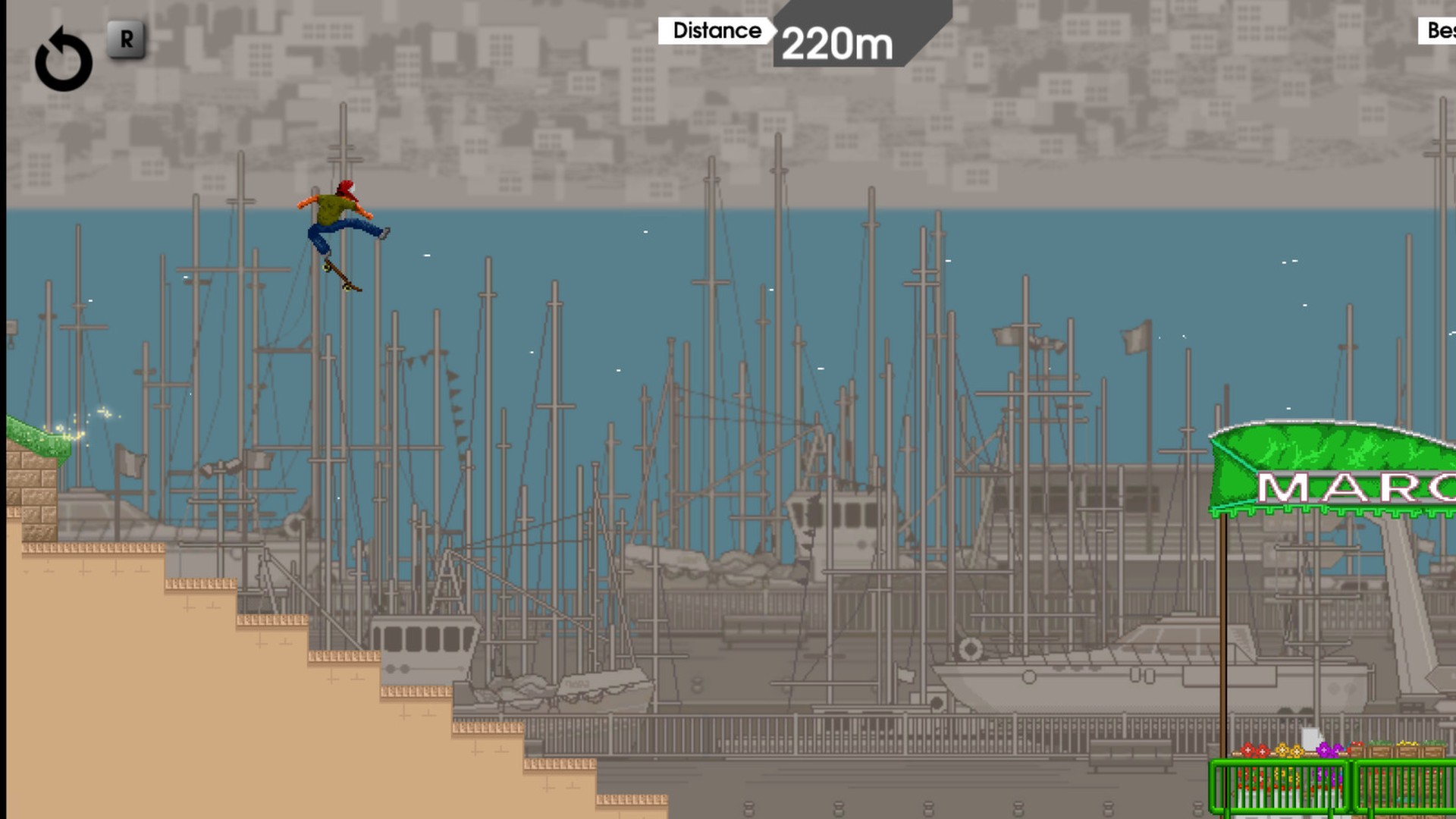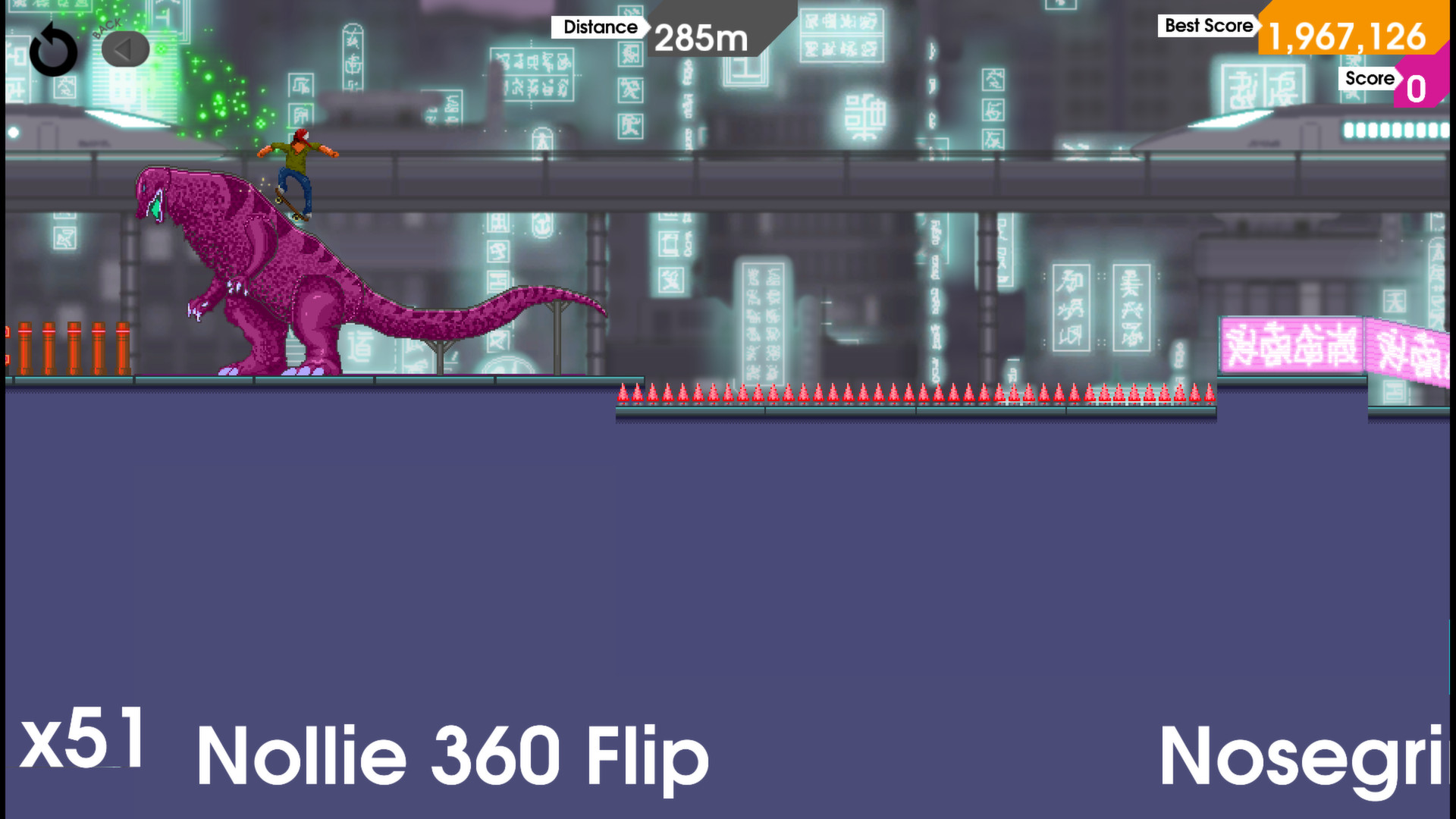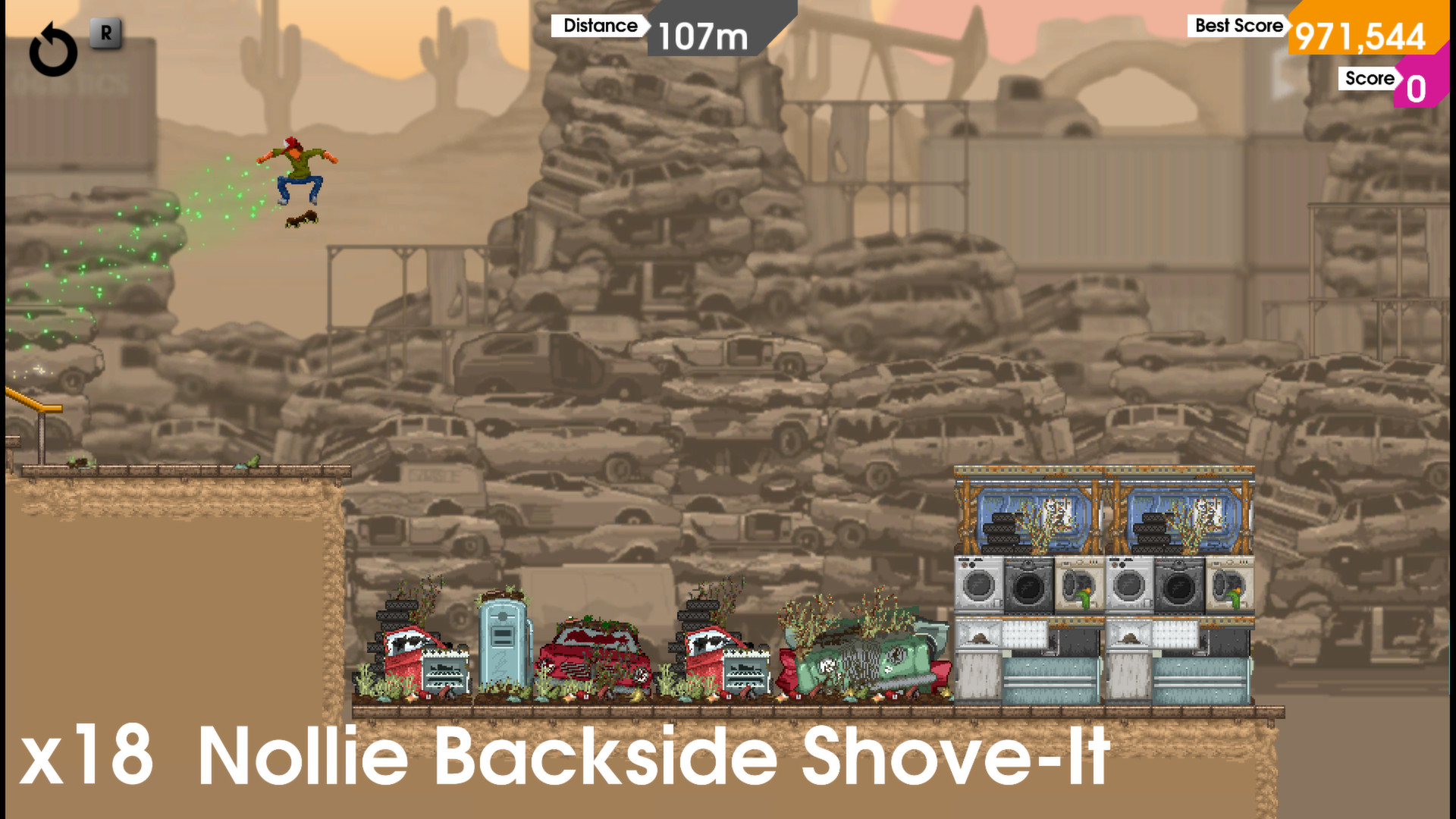OlliOlli's creators on sticking the landing with their skating series on PS Vita and beyond: "My wife and I had become totally addicted to this game on the iPad"
Interview | Play Magazine explores how the OlliOlli series came together

Seeing someone do something cool, feeling inspired, then messing around yourself, putting little movements and ideas together to create your own unique line. That's skateboarding – and it's also how the OlliOlli series came together. Having played endless runner Canabalt, creative director John Ribbins had a thought: 'I think that could be cool on a skateboard.' He'd already spent years tinkering with ideas for 2D skaters. Even though during the late noughties Roll7 was focused on educational entertainment and marketing, Ribbins threw together a simple mobile demo for the game.
"It didn't have tricks, it just had you tap the screen to jump, and you had to tap the screen again before you hit the floor, or you literally just fell over and it played the sound of a watermelon being hit with piece of stick and it sounded like you broke your legs," he recalls.
Flipping awesome

"Then we walked out of that meeting and me and Tom [Hegarty] looked at each other and went 'What's the Vita?'"
Co-studio head Simon Bennett remembers the demo well. On a trip around the world, "My wife and I had become totally addicted to this game on the iPad," he recounts. Rather than spinning their wheels, the team urged Ribbins to show the demo around. "I saw this chap, he was wearing skate shoes, and so I just went up to him was like, 'You alright mate, do you skate?'" Ribbins says of attending Develop Brighton.
It turned out the man who tried and loved the demo was James Marsden of FuturLab (Velocity 2X, Surge, Tiny Trax). Futurlab had just struck a deal with PlayStation itself, and so Marsden put them in touch with Shahid Ahmad, who was heading up the company's indie programme at the time. The meeting, about Roll7's usual educational fare, did not go well – until they pulled out the demo. Ahmad sat in the corner playing it while the conversation continued. Bennet recounts the tale:
"Shahid was like, 'There's a reason I've been deadly silent for the last 20 minutes – because this is gold.' Like, 'I want this on Vita, I'm gonna sign you guys up immediately.'" "We were like, 'absolutely,'" says Ribbins. The problem? "Then we walked out of that meeting and me and Tom [Hegarty] looked at each other and went 'What's the Vita?'"
With that, development of OlliOlli began in earnest, the mobile demo giving way to PS Vita. "It was horrendous," laughs Ribbins about coding for the new hardware. At the time, PS Vita didn't support Unity. Three months in ("A nine-month project, as well!" says Bennett), the team had only just begun being able to draw images to the screen. While they had a great game in the works, getting it onto the console after being used to developing for mobile was the hurdle to kickflip over.
"That was our crash course in learning how to make real videogames," says Ribbins, a sentiment shared by Bennett: "We'd never made console games. And it was it was proper trial by fire." "It was a year-long argument," says Ribbins. "Yeah, it was a year-long argument slash-nervous breakdown on my behalf. The whole thing was an absolute nightmare. And then it came out, and everything was amazing from that point onwards," chuckles Bennett. As anyone who's tried knows, learning a new skate trick is always going to result in a few bails. While the studio was still perfecting its line, before OlliOlli was even released, PlayStation committed to funding OlliOlli 2, again for PS Vita.
Weekly digests, tales from the communities you love, and more

This feature first appeared in PLAY magazine - Subscribe here to save on the cover price, get exclusive covers, and have it delivered to your door or device every month.
All OlliOlli games share a simple core – you trick through 2D, downhill levels, flicking the stick both to jump and to perform different tricks, while timing your grinds, manuals, and landings to bank your score. It's become more complex in later entries (for example, OlliOlli World introduced grabs – "I banged on about it for-fucking-ever!" says Bennett), but the principles remain.
Ribbins credits both Skate and Thrasher: Skate And Destroy as primary inspirations. The latter game featured an Expert mode that required you to stick landings properly with a button press. "No-one ever did that mechanic again, and I always thought it was really, really cool," says Ribbins. At the heart of OlliOlli is a desire to get across the feelings fundamental to skateboarding. "Anyone can kick a board in the air and flip it 1,000 times, you know, four or five times, make it spin around, whatever," says Ribbins. "The hard thing is getting your feet back on the thing and rolling away." Combine that with a combo system, and the challenge of seeing how long you can keep a combo going before you lose it all is already tantalising. Add the fantastic level design that's evolved through to OlliOlli World, and you have something that's ridiculously compelling in the hands.
Flipping off

Getting across the idea of holding the left stick and flicking to jump was tough. The team found some people were too used to the Tony Hawk method. "That was a real struggle, man. For a lot of the first game people were just like, 'Why don't you just make a jump, and then you do tricks afterwards?'" says Ribbins. "That's just not… that's not how it works. You don't jump and then do the trick – the trick is part of the setup. You crouch, you get your feet in the position, and then you commit to that trick." The result of this approach to tricks is that you're constantly expressing yourself as you play, as your left thumb flicks away. "There's something incredibly visceral about that. It's simple, but it's effective. It does go against the norm," says Bennett.
Testers warned the team against it. "It would have been really easy just to sort of yield on that and then the games wouldn't have had that tactile feel," he continues. That said, complaints that the game used too many buttons were taken on board, leading to a dedication to keep things as simple as possible. "The initial iteration was like, 'Can we make it that you kind of… it's just analogue stick and this one button because it's got rhythm to it?'" says Ribbins. At one point, actually making it a rhythm game was considered ("But that was terrible and rapidly thrown in the bin," adds Ribbins). The cadence of gameplay has remained important throughout the series, all the way through to the recently released third game, OlliOlli World. With new tricks, grabs, and wall runs, there's much more going on, but the goal of keeping things intuitive remains.
"When we started [World] it was definitely like looking at that kind of interaction list almost like sheet music and being like, 'Where are the gaps?'" In OlliOlli 2, after pulling off a trick with big air, all you could really do was spin. "We focused a lot on giving you more things to do in the air, which was a big dead time in the previous games," says Ribbins. While some mechanical twists reward hardcore players who want to get the most out of every combo, the key with the major ones was to keep them simple. This series is one that fundamentally needs to feel good simply to play.
[The new moves] "are not a hard addition to the game, they're quite a straightforward thing to do. [...] Some of it's just about feeling cool – just holding a big grab, and then it tweaking after one second when you're getting big air. It's just like… that just feels nice to do sometimes," says Ribbins.
This feature first appeared in PLAY magazine - Subscribe here to save on the cover price, get exclusive covers, and have it delivered to your door or device every month.

Games Editor Oscar Taylor-Kent brings his year of Official PlayStation Magazine and PLAY knowledge. A noted PS Vita apologist, he's also written for Edge, PC Gamer, SFX, Official Xbox Magazine, Kotaku, Waypoint, GamesMaster, PCGamesN, and Xbox, to name a few. When not doing big combos in character action games like Devil May Cry, he loves to get cosy with RPGs, mysteries, and narrative games. Rarely focused entirely on the new, the call to return to retro is constant, whether that's a quick evening speed through Sonic 3 & Knuckles or yet another Jakathon through Naughty Dog's PS2 masterpieces.


